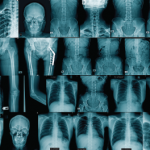NEW YORK (Reuters Health)—After discontinuation of teriparatide, increases in bone mineral density (BMD) are greater with denosumab than with zoledronic acid, but whether that translates into a decreased fragility fracture risk remains unknown, researchers say. Teriparatide was the first anabolic treatment approved for osteoporosis in the U.S. It has been shown to increase BMD, and…
Search results for: fracture

The FDA Approved Several New Rheumatology Drugs in 2017
SAN DIEGO—In a session at the 2017 ACR/ARHP Annual Meeting, Kam Nola, PharmD, MS, professor in the College of Pharmacy and vice chair in the Department of Pharmacy Practice at Lipscomb University in Nashville, Tenn., updated participants on new medications and new indications for rheumatology treatments and safety labeling changes approved by the U.S. Food…

3 Experts Discuss Bone Health
SAN DIEGO—At the 2017 ACR/ARHP Annual Meeting Nov. 3–8, experts discussed improving bone health in the U.S., gave tips on bone health disorders in pediatrics and reviewed new translational science findings for joint conservation in early osteonecrosis. E. Michael Lewiecki, MD, director of the New Mexico Clinical Research & Osteoporosis Center in Albuquerque, N.M., called…
Patients with Gout May Be More Likely to Develop Osteoporosis
NEW YORK (Reuters Health)—People with gout face a modestly increased risk, of about 20%, for developing osteoporosis, compared to people without gout, researchers in Taiwan suggest. In their population-based study to examine a possible association between gout and subsequent osteoporosis, Dr. Victor C. Kok of Asia University (Taiwan), Taichung, and colleagues retrospectively analyzed data from…
U.S. Telehealth Industry Eyes Medicare for Its Next Big Check
(Reuters)—After years of lobbying in Washington, U.S. telehealth providers have the first hints that the dam could break on public funding for an industry they say could save taxpayers billions. Four bills that could be signed into law over the next year carry the solutions to barriers that have prevented the U.S.s’ huge over-65 health…

2017 ACR/ARHP Honors & Awards, Part 2
SAN DIEGO—At the 2017 ACR/ARHP Annual Meeting in San Diego in November, the ACR and the ARHP honored a group of distinguished individuals who have made significant contributions to rheumatology research, education and patient care. This month, The Rheumatologist speaks with the ARHP winners about their individual contributions. In addition, we profile the new class…
Older Women Should Not Take Hormones to Prevent Chronic Diseases
(Reuters Health)— Postmenopausal women should not use hormone therapy to prevent chronic medical conditions, because the risk of significant side effects outweighs the unclear evidence of a benefit, according to a government-backed panel of experts. Most chronic conditions – coronary heart disease, dementia, stroke, fractures, and breast cancer, for example – are more common with…
Opioid Painkiller Prescriptions May Run in Families
(Reuters Health)—When one person in a household gets prescribed opioids, the other people who live with them are more likely to get their own prescriptions for these narcotic painkillers, a U.S. study suggests. Researchers examined data on about 12.6 million people living in a household where someone was prescribed opioids and 6.4 million individuals in…

Year in Review: Expert Covers 2017’s Key Clinical Findings
In a Year in Review session at the 2017 ACR/ARHP Annual Meeting, Daniel Solomon, MD, MPH, highlighted the latest and most intriguing aspects of clinical research on rheumatic diseases from 2017. His discussion touched on medical therapy, genetics, the effects of bariatric surgery and diet, cancer risk and more…

Hyperuricemia Doesn’t Always Indicate Gout in Rheumatic Disease
A 57-year-old Ghanaian woman was referred to our rheumatology practice with acute, left elbow swelling and pain. The referring oncologist suspected gout, because the patient had hyperuricemia. Six months before, the patient was diagnosed with stage IV human T-lymphotropic virus type 1 (HTLV-1)-associated adult T cell lymphoma (ATLL). Her initial oncologic manifestations included multiple thoracic,…
- « Previous Page
- 1
- …
- 17
- 18
- 19
- 20
- 21
- …
- 44
- Next Page »